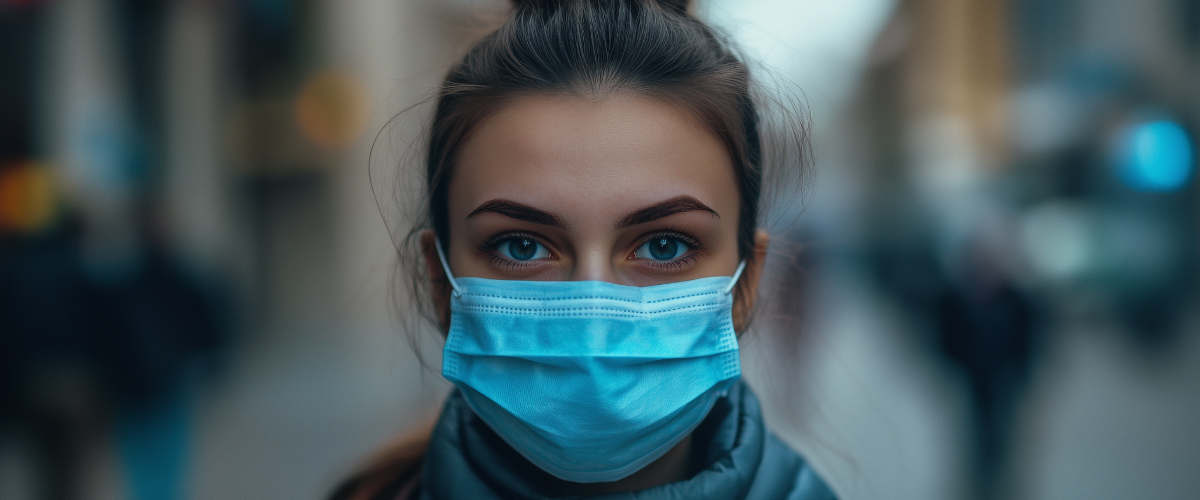COVID-19 Proves the Nanny State Does More Harm than Good
You might call it the “curse of good intentions”: actions taken upon ourselves or required of others, expected to improve things for us as individuals or for society. But what if these well-intended actions do more harm than good?
The Nanny State: A Growing Problem
I’m referring, of course, to the metastasizing “Nanny State” laws and regulations. These rules impose unnecessary restrictions and create red tape. They ban young girls from selling Girl Scout Cookies in their own front yard, force day care providers to get a college degree to babysit children, and even shut down a seven-year-old’s lemonade stand for lacking a permit.
The COVID-19 pandemic has proven once and for all that many, if not most, of these rules are unnecessary and even harmful. In some cases, regulations enforced by the Nanny State have directly led to increased death rates and greater suffering during the pandemic.
The Impact of Regulations on ICU Capacity
Consider the shortage of intensive care unit (ICU) beds that developed as America set out on its mission to “flatten the curve.” Unfortunately, in 35 states and the District of Columbia, hospitals must get regulatory approval to expand their facilities, including (in many cases) ICU beds. The approval process has little to do with qualifications or safety. Instead, it’s a bureaucratic assessment to decide if more healthcare capacity is “necessary.”
Acquiring such a “certificate of need” (CON) has evolved into a time-consuming and expensive competition between established healthcare providers and their would-be competitors. These delays in approval have real-world consequences. States with CON laws are nine times more likely to experience ICU bed shortages. New York, which pioneered CON laws and lobbied Congress to force other states to adopt them, projected a shortage of nearly 6,000 ICU beds. By hindering the expansion of critical healthcare infrastructure, CON laws likely contributed to overwhelmed hospitals and, by extension, increased mortality rates during the pandemic. Indeed, 15 of the 20 states that faced ICU bed shortages required hospitals to go through a CON process when they expanded.
Diagnostic Technology: Restricted Access
Another way the Nanny State increased the severity of the pandemic was through the restrictions imposed on access to diagnostic technology. A prime example is the “pulse oximeter,” a device invented in 1935 that measures blood-oxygen levels. While pulse oximeters only cost a few dollars each, the devices were in short supply due to regulations enforced by the FDA. For instance, the Apple Watch has built-in capabilities to monitor blood oxygen levels. Older versions of Samsung Galaxy phones also included this feature. However, these capabilities were disabled or discontinued to avoid violating FDA rules, which prevented many people from monitoring their health effectively and possibly delayed critical care when it was needed most.
Licensing Laws: Restricting Medical Help When It’s Needed Most
A common defense of the Nanny State is that its regulations protect public health and safety. But during a pandemic, some of these regulations have the opposite effect. State-specific licensing laws for medical professionals are one example. Normally, medical professionals are licensed on a state-by-state basis. If you’re a licensed physician in New Jersey, for instance, you can’t practice in New York City. This restriction applied even as New York became the epicenter of the pandemic in America.
In a public health emergency, though, you want every available physician to be able to treat the sick. Thus, 47 of 50 states temporarily waived licensing requirements for out-of-state physicians. They also suspended restrictions on telemedicine for physicians licensed in other states. This begs the question: if these regulations could be safely suspended during a crisis, why are they necessary in the first place? If out-of-state physicians didn’t cause harm during the pandemic, it suggests that these rules may not be needed at all.
Meat Shortages: A Product of Overregulation
The meat shortages across the country are another example of how Nanny State regulations exacerbate problems. Current Department of Agriculture guidelines require even small meat processors to follow the same rules as large slaughterhouses. This approach places a heavy burden on small businesses.
During the pandemic, over two dozen major meatpacking and processed food plants shut down. As a result, millions of chickens, pigs, and cattle were needlessly slaughtered without entering the food supply chain. Allowing small independent processors to sell directly to the public could help, but this is currently illegal. These restrictions have created supply chain bottlenecks, leading to unnecessary shortages.
Counterarguments: Are Regulations Always Bad?
Proponents of these regulations argue that they are meant to ensure safety, quality, and consumer protection. They believe these rules protect the public.
However, the pandemic has shown that the costs of these regulations can far outweigh their benefits, particularly during emergencies. Delays in healthcare expansion and restricted access to basic medical devices have proven this point. Artificial barriers to medical practice during a crisis further illustrate how regulations can sometimes do more harm than good. While safety remains important, so is the ability to respond swiftly and effectively in emergencies.
The Lesson of COVID-19: Central Planning Fails
That the central planning engendered by the Nanny State in its response to the pandemic was such an abject failure should surprise no one. An economic system that relies on officials at the top of a hierarchy to make economic decisions on behalf of everyone else is doomed to failure. The collapse of the centrally planned socialist economies of the Soviet Union, Cuba, and Venezuela proved that point beyond a shadow of a doubt.
Time to Rethink the Nanny State
The COVID-19 pandemic has demonstrated that many Nanny State regulations can hinder rather than help in times of crisis. If certain rules can be safely suspended without causing harm, it suggests they may not be necessary at all.
We need to re-evaluate the role of government in our lives and reduce the bureaucratic red tape that limits our ability to adapt and innovate.
Adopting a more flexible and dynamic approach to governance will better prepare us for future challenges. This shift ensures that the well-being of citizens takes precedence over rigid regulatory processes.



